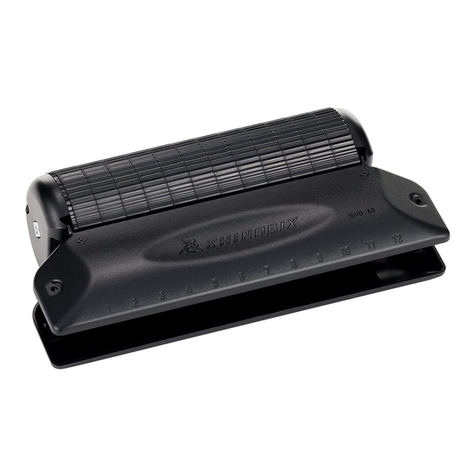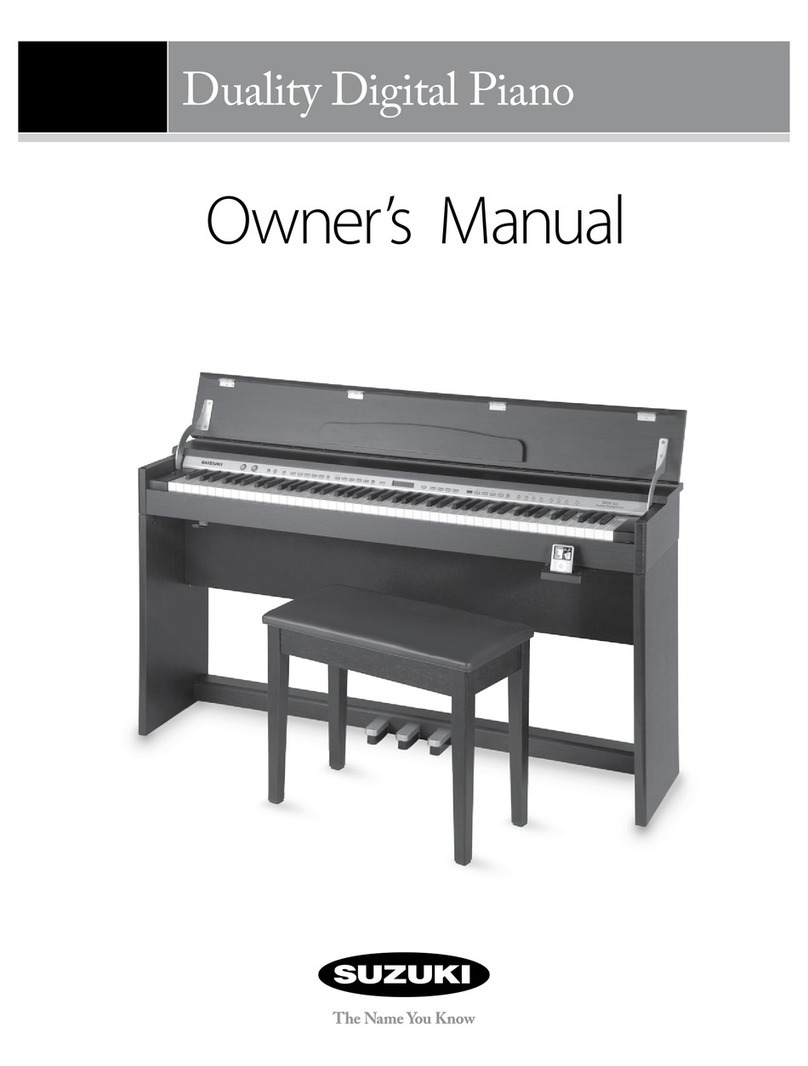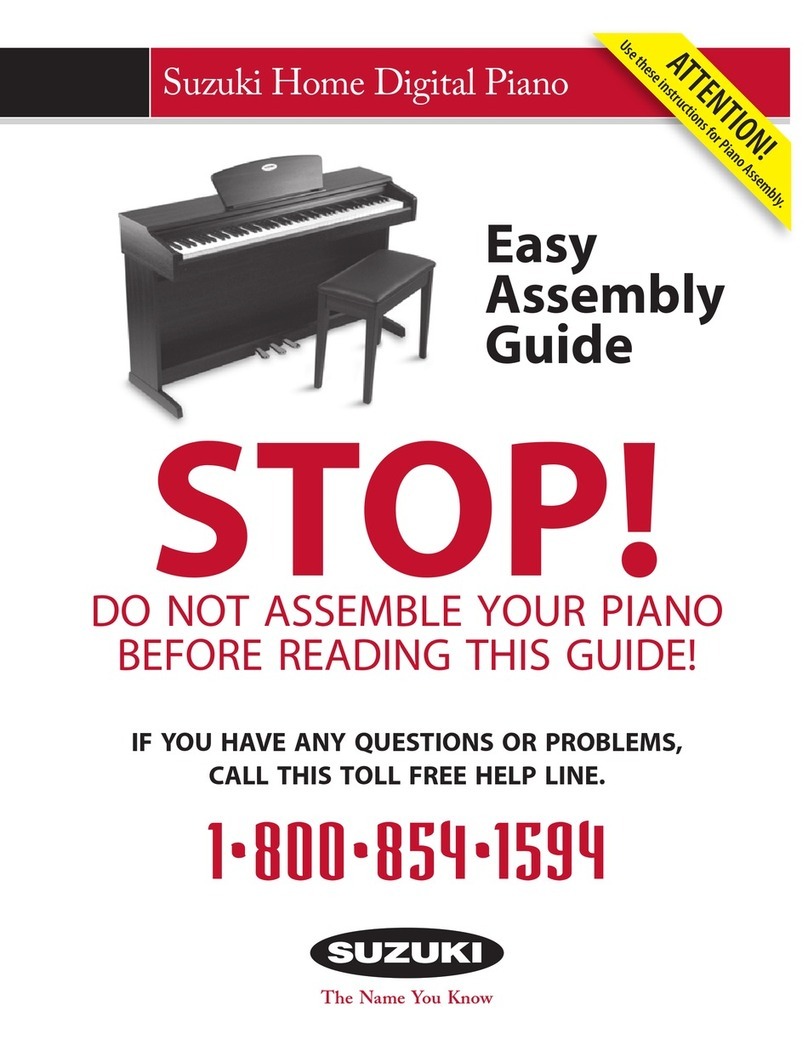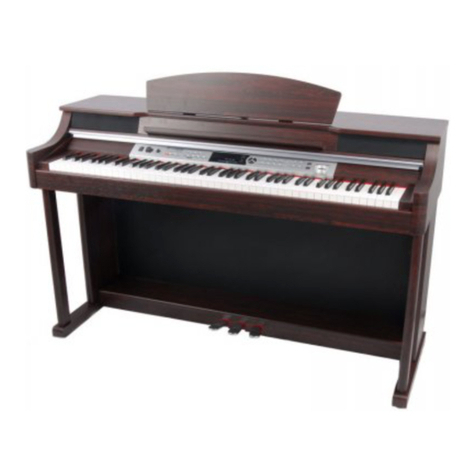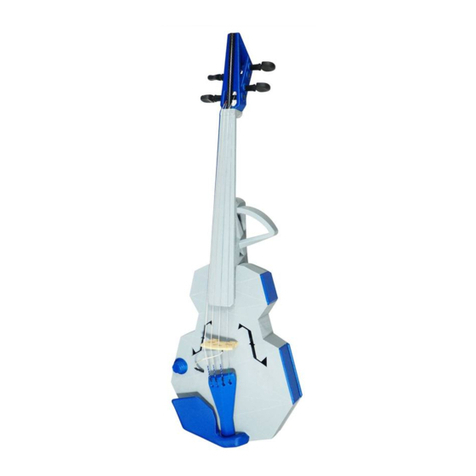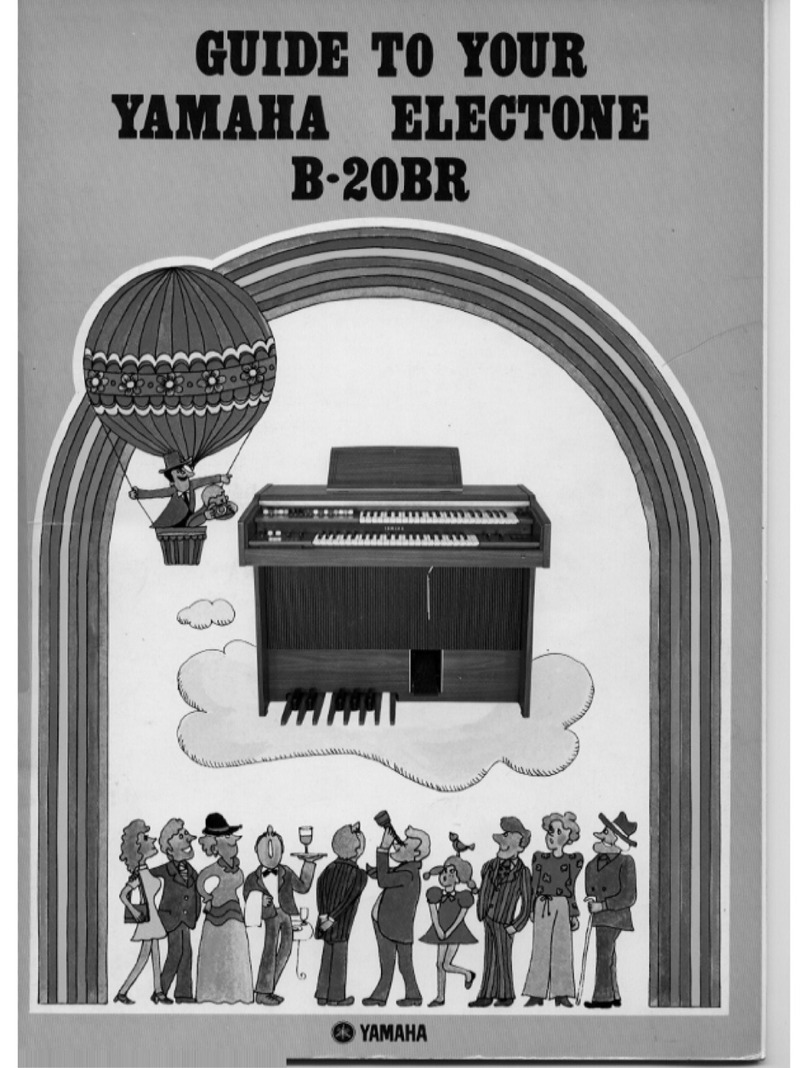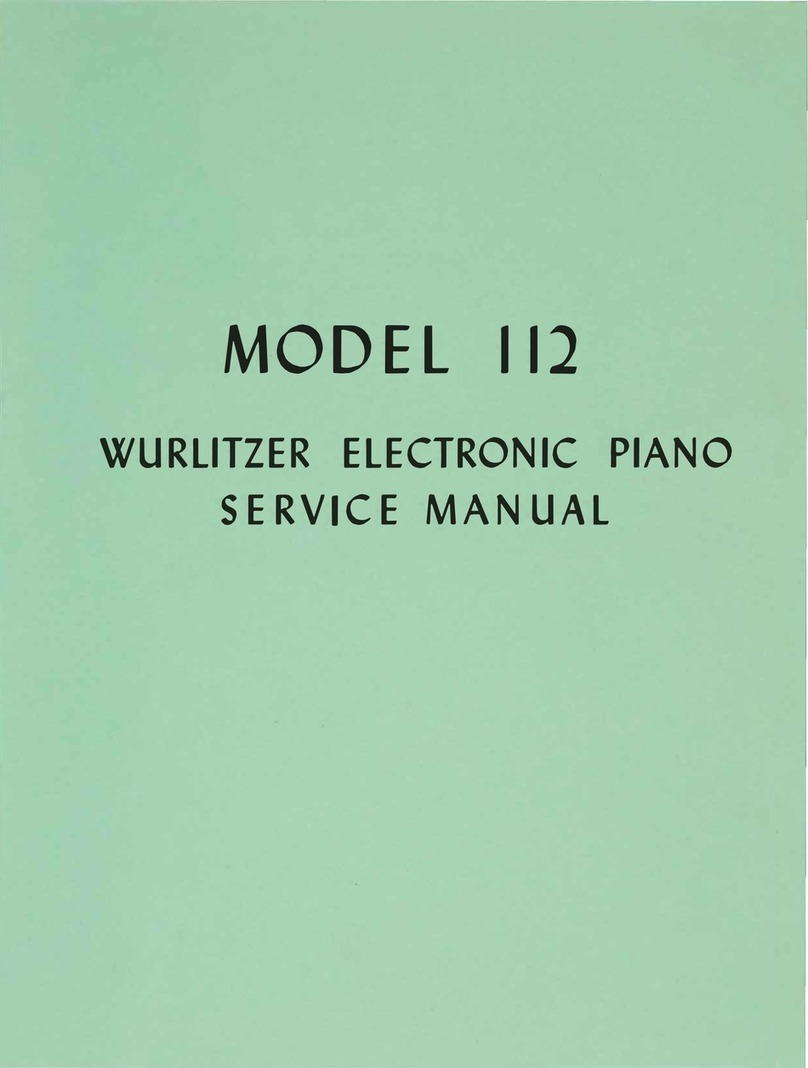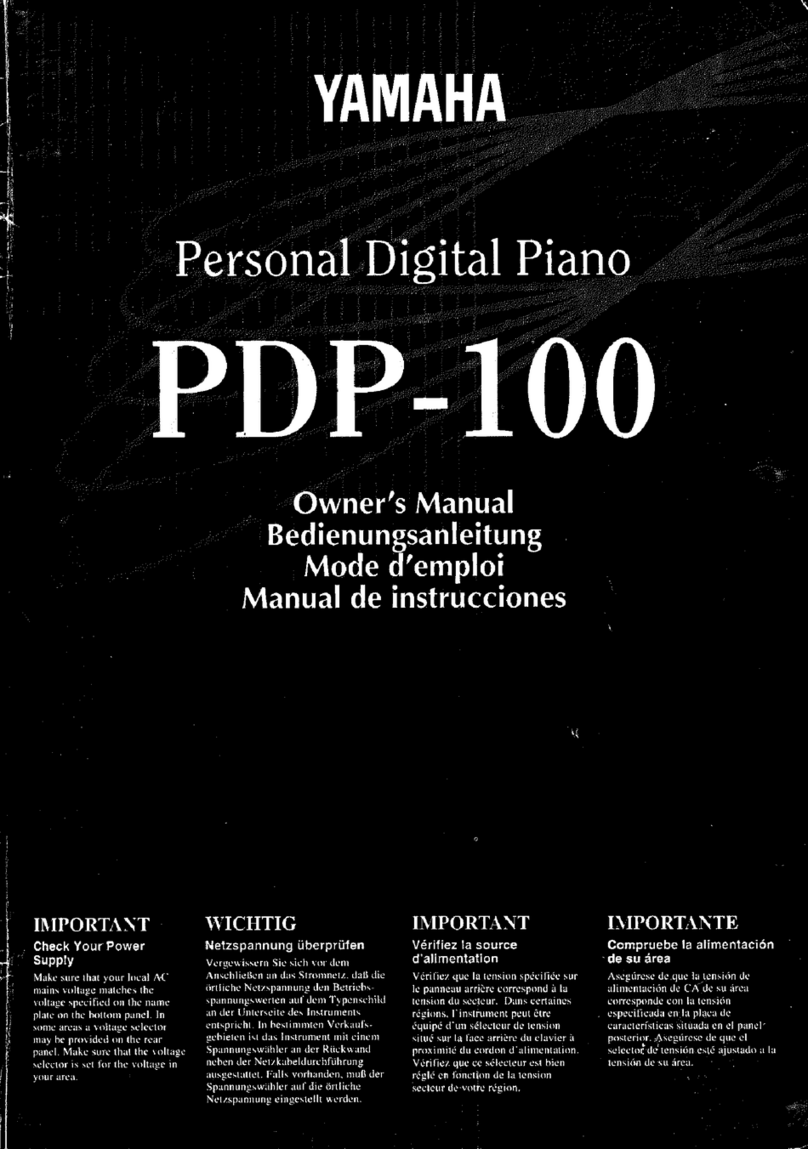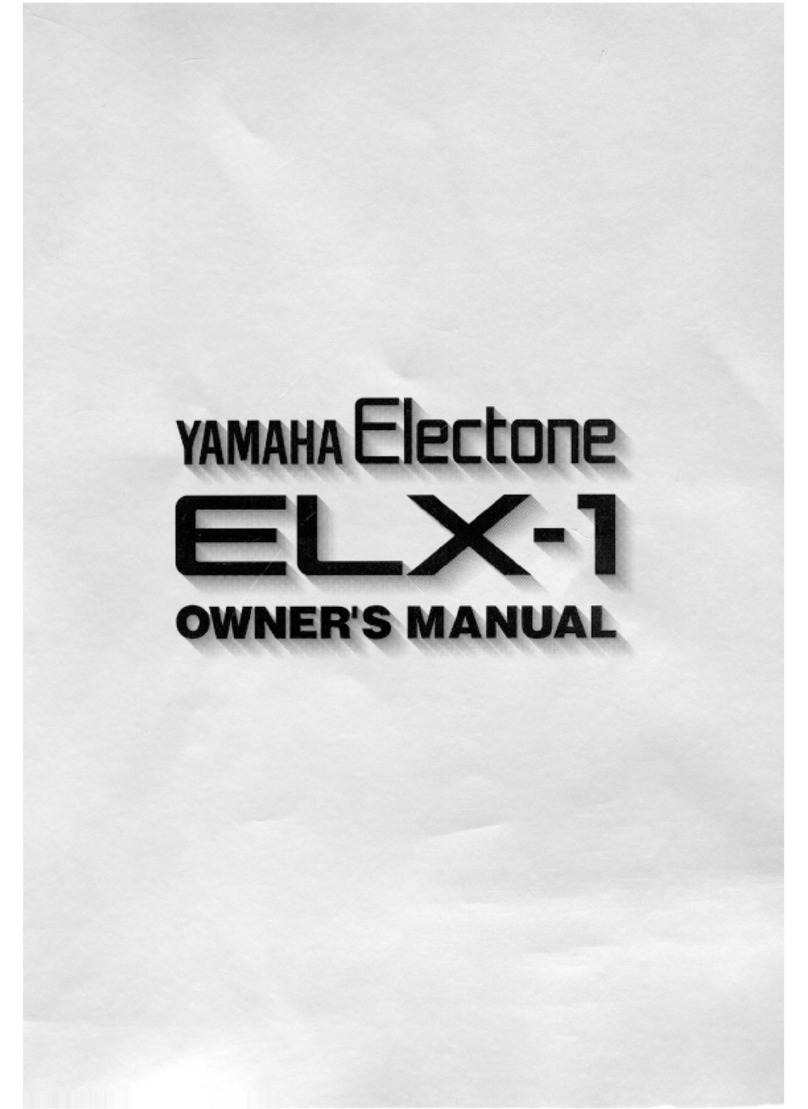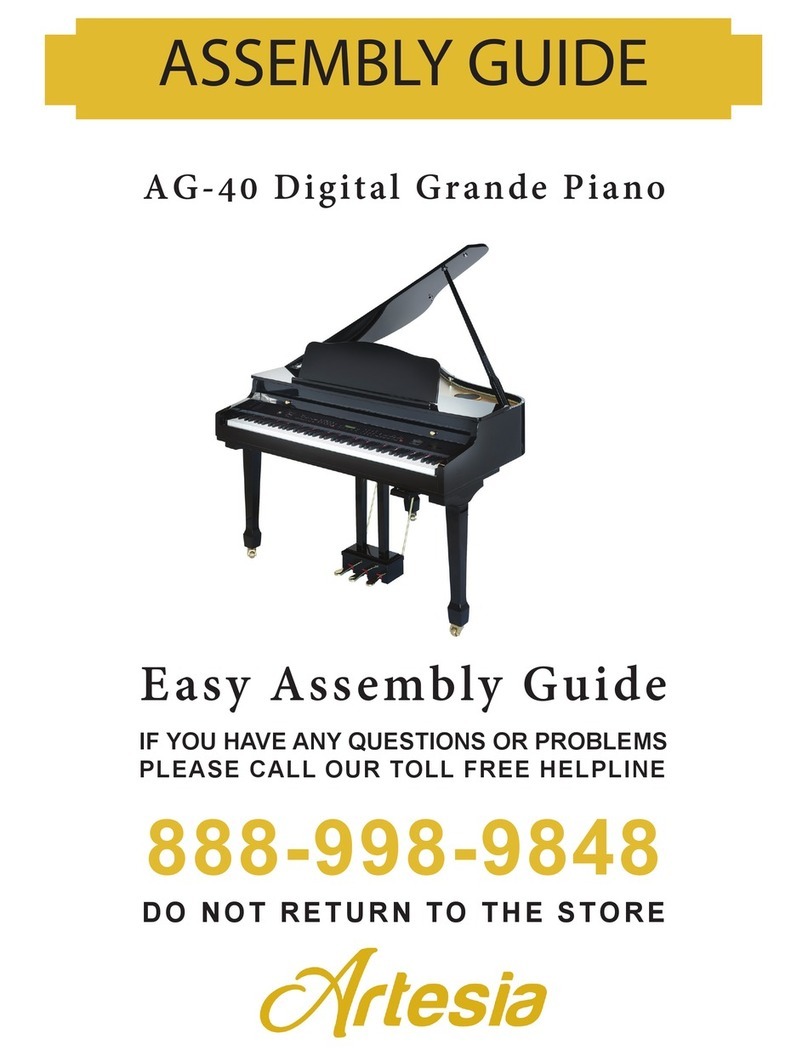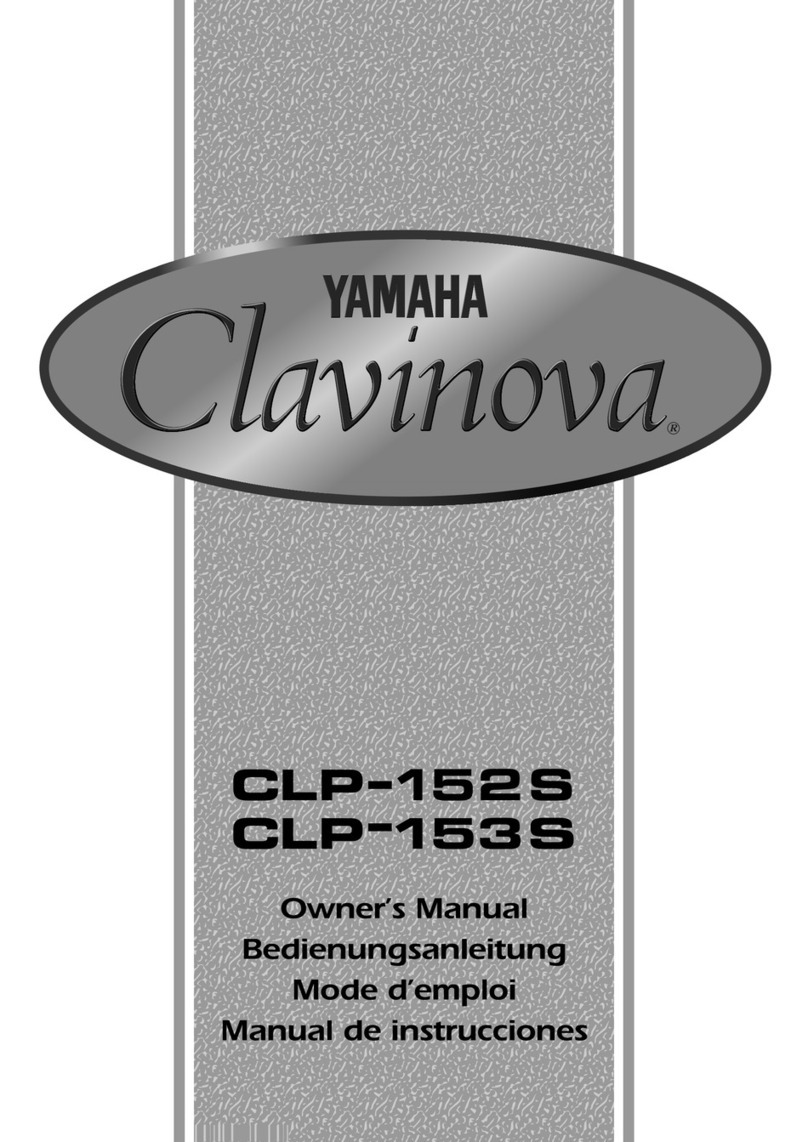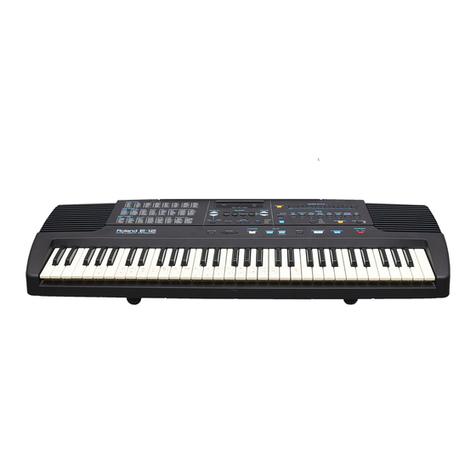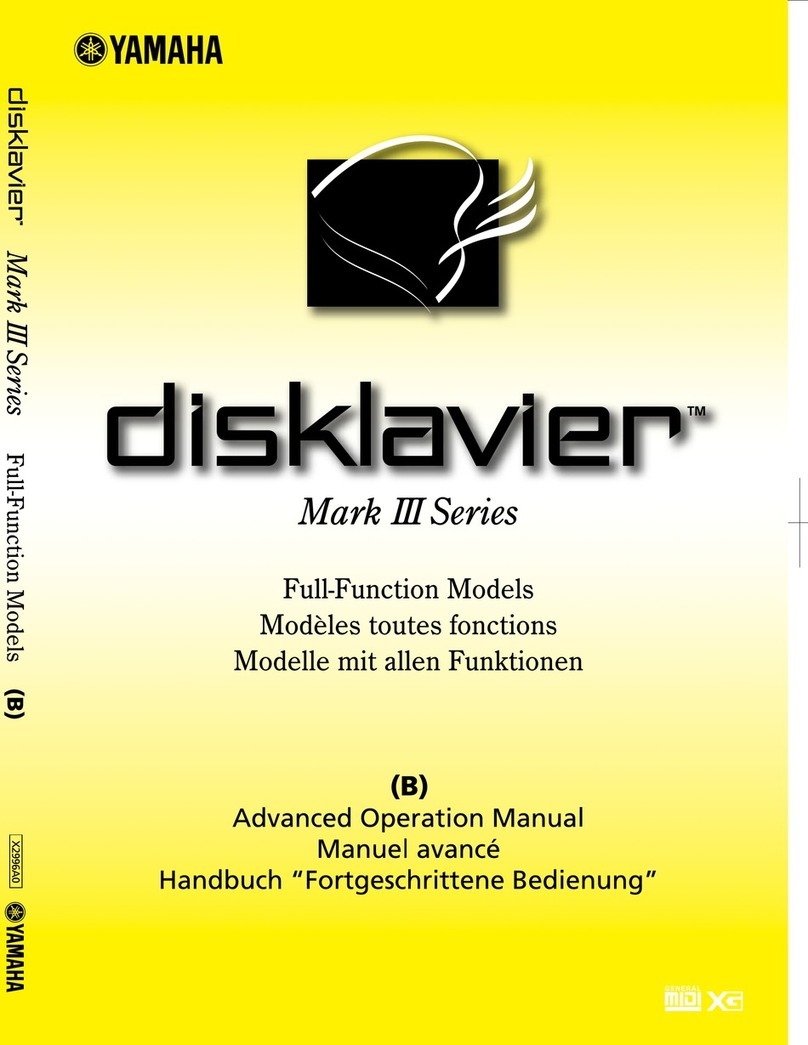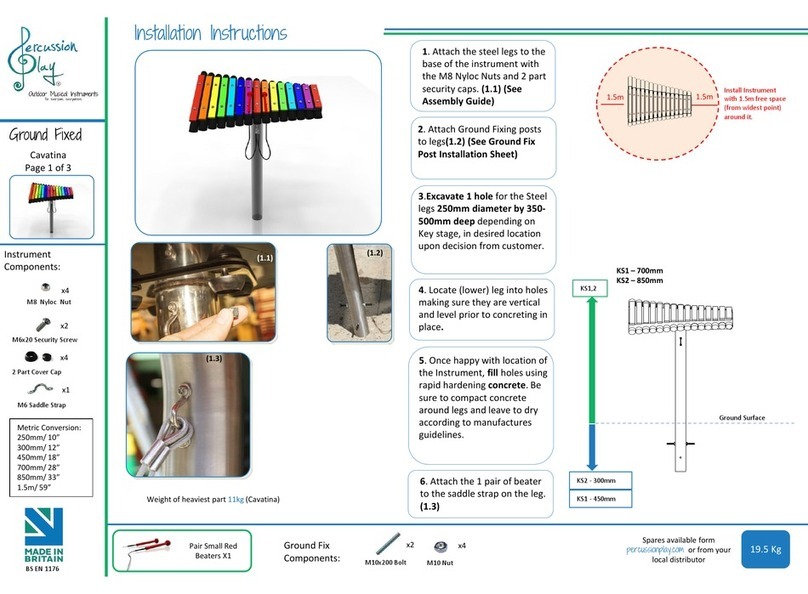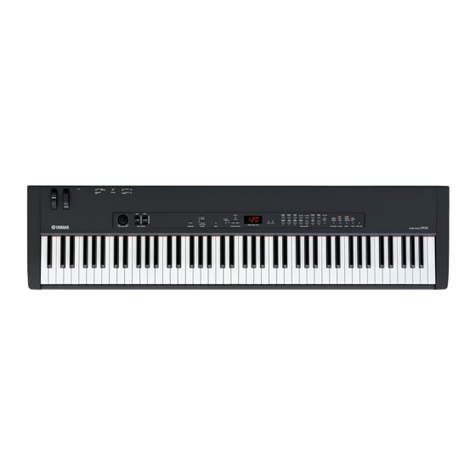Suzuki SUB 30 UltraBend User manual

スズキ10ホールズ SUB30 取扱説明書
音配列について
10ホールズを大きな口でガバっとくわえて、適当に吹き吸いしてみましょう。それだけ
でなんとなく音楽になっているように聞こえませんか?それはこの配列のおかげなの
です。和音を出すことができるかわりに第1オクターブ目には「ファ」と「ラ」がありませ
ん。しかし「ベンド奏法」と呼ばれる10ホールズ独特の奏法を使うと「ファ」も「ラ」も出
すことができます。ベンド奏法とは口の中で舌やのどを動かして音を下げる奏法で
す。この奏法を習得することで、元々10ホールズには無い音が出せたりブルージー
な表現ができるようになります。そして、SUB30は従来の10ホールズでは、吹き吸い
とベンド奏法だけでは足りなかった音階も、特殊な奏法を用いる必要なく、ベンド奏
法で発音することができます(下表 列)。
演奏・ベンド奏法について
この度はスズキ10ホールズ「SUB30」をお買い上げいただきまして誠にありがとうございます。本製品を安全に末永くお使いいただくため、この取扱説明
書をよくお読みください。お読みになった取扱説明書はなくさないように大切に保管してください。
それぞれのリードの機能
SUB30には通常吹リード10弁、吸リード10弁、ベンド用リード10弁が備わってい
ます。下記表において、
リードセッティングについて
SUB30は工場出荷時に各リードが正確に機能するようセッティングされています。
しかし、使用していくうちに、各リードのセッティングのバランスが崩れ、正確に機能
しなくなることがあります。そういった場合には再度セッティングする必要がありま
す。下に「よくあるトラブルとその対処方法」を載せたので参考にして下さい。※ベン
ド音を正確に出すには吹き方も重要です。
リードについて
よくあるトラブルとその対処方法
〒430-0852浜松市中区領家2-25-12 TEL.053-461-2325FAX.053-463-5858
穴番号
リード番号( 上の手 )
リード番号( 下の手 )
1 2 3 4 5 6 7 8 9 10
1 3 5 7 9 11 13 15 17 19
2 4 6 8 10 12 14 16 18 20
1 2 3 4 5 6 7 8 9 10
1 2 3 4 5 6 7 8 9 10
穴番号
リードプレート組立(上の手)
リードプレート組立(下の手) バルブ:1〜6内側7〜10外側
1 3 5 7 9 11 13 15 17 19
2 4 6 8 10 12 14 16 18 20
1 2 3 4 5 6
7 98 10
吹リード 吸リード ベンド用リード を表しています。
①和音が鳴る
アゲミが低い場合に起こります。この場合アゲミを高くします。
③バルブノイズ発生
発音時に低い音域のノイズが混ざる場合は、バルブノイズの可能性が考えられます。
④バルブの貼り付きについて
【例】穴番5で吸音を鳴らしたときに、和音になる。(ベンド用リードが共鳴している。)
ベンド用リードのアゲミを調整します。
アゲミが高い場合に起こります。この場合アゲミを低くします。
①、②は相互に関連付けられているので、実際に演奏しながら
丁度良いセッティングを探しましょう。
アゲミが低い
アゲミが高い
和音が鳴る、ベンド音は出しやすい。
和音が出ない、ベンド音は出しにくい。
②ベンド音が出しにくい ベンド用リードのアゲミを調整します。
ベンド用リードのアゲミを高く調整。
ベンド用リードは通常のリードとはアゲミが異なり、
プレート側に落ち込んでいる状態が正常となります。
プレートの厚み
の範囲内で調整
してください。
※
Point
OK NG
【例】穴番3で吸音を鳴らしたときに、ノイズが発生する。
バルブを先が上がる様に反らすと改善される場合があります。
※ノイズ発生原因がアタリの場合もあります。
※バルブに完全が折れ曲がっている場合には改善されないことがあります。
※ベンド用リードを使用したベンドの場合
プレ
ー
ト
【C調】
ベンド吹吹 吸 ベンド吸
SUB30で吹・吸・ベンド奏法で演奏可能な音階一覧
BD# F# BD# F# A# C# E G#
C# F G# C# G# D# F# A#
F# A B
A#
1 2 3 4 5 6 7 8 9 1 0
CE G CE G BD F A
FC
D D A E G
GC
B
SUB30は一般的な10
ホールズでは発音する
ことができなかった、こ
の列の音階がベンド奏
法によって発音するこ
とができます。
アゲミを 高くする
アゲミを 低くする
ベ ンド 用 リード の調整イメージ
※注:通常のリード調整の場合、アゲミの高低が
逆になります。
▼ ベンド用リードの調整
▼ バルブの調整
※左表 列以外のリードの調整は一般的な10ホールズの調整と同様。
冬季など寒い時にハーモニカを吹いた場合、息の水分でプレートとバルブの間に水
がたまり、バルブがプレートに貼り付くことがあります。バルブを使用しているハーモ
ニカは全てこのような現象が起きますが、故障ではありません。バルブが貼り付かな
いよう、冬季は体などでハーモニカを温めてから使用すると良いでしょう。
演奏の前に
手を洗い、口をきれいにすすぎましょう。また1音ずつゆっくり鳴らしてみて、音程が
おかしくないか確認しましょう。通常より音程が大きく下がっている音があれば、リー
ドが折れている可能性があります。その場合、使用しないでください。
異物を入れないで
吹口やすき間に異物を入れないでください。故障・破損の原因になります。
カバーを強く押さないで
カバーを強く押したり、かんだりしないでください。変形・破損の原因になります。ま
た、変形してできたすき間に唇や舌などが入ると思わぬケガをする恐れがあります。
ハーモニカを投げたり落としたりしないでください
ハーモニカが破損するだけでなくケガの恐れがあり危険です。
熱くなるところはさけて
車の中やストーブのすぐ近く、日ざしの強いところにおかないでください。変形・破損
の原因になります。
通常のお手入れについて
演奏後は穴を下に向けて軽く振り、たまった水を抜きましょう。やわらかい布でから
拭きするか、ハーモニカ除菌クリーナー(HAC-01)や消毒用エタノールを含ませた
布できれいにしましょう。本紙に記載の無い薬品や溶剤などを使ってのお手入れ
は、製品を傷めますので絶対に使用しないでください。お手入れ後はケースにしまっ
て保管してください。
安全に末永くご使用いただくため以下の指示を必ずお守りください。
注意
リードに関する注意事項
リード は 折 れることが あります
ハーモニカは内部で「リード」と呼ばれる小さな金属の板が振動し、音が鳴る仕組み
です。リードは使用頻度や吹く息の強さによって金属疲労で音が下がったり、亀裂
が入ったり、また折れたりすることがあります。これはリードを使用した楽器全般に
起こり得る現象です。
上を向いて演奏しないでください
ハーモニカは上を向いて演奏しないでください。万一リードが折れた場合に、リード
片が口に入ったり、吸い込んでしまう恐れがあります。もし吸い込んでしまった場合
は、お近くの医療機関にご相談ください。
リード が 折 れ る 前 兆 とし て
リードが折れる場合、前兆として音程が大きく下がります。その場合、ただちに演奏
を中止してください。そのまま演奏を続けると、リード片が口に入ったり、吸い込んで
しまう恐れがあります。
リードは消耗品のため定期的なメンテナンスが必要です
弦楽器の弦が消耗によって切れることがあるように、リードも消耗によって音程が
狂ったり、折れたりします。演奏の仕方や使用頻度によってリードの消耗状態は異
なりますが、長く安全にお使いいただくため、定期的に弊社にメンテナンスをご依頼
いただくことをお勧めいたします。

INSTRUCTIONMANUALSUZUKISUB30“UltraBend”
ThankyouforpurchasingtheexcitingnewSUB30UltraBend10holeharmonica!
Pleasereadthefollowingplayingandmaintenanceinstructionscarefully,toensuretrouble-freeuseformanyyearstocome.
HOWTOPLAYANDBENDNOTES
UltraBendNOTELAYOUT
7106
-
3B
-
APR
-
MM
-
181
-
B
00457
-
10091v2.0
2-25-12RyokeNaka-KuHamamatsuJapan
【C key】
BEND BLOWBLOW DRAW BEND DRAW
Blow, Draw and Bent notes
BD# F# BD# F# A# C# E G#
C# F G# C# G# D# F# A#
F# A B
A#
1 2 3 4 5 6 7 8 9 1 0
CE G CE G BD F A
FC
D D A E G
GC
B
The SUB 30 UltraBend
gives you lots more
available notes by simple
bending technique alone.
When your skills are
developed you can use it
to play fully chromatically!
②IfbendingwiththeSympatheticReedisdifficult
③ValveNoise
Adjustthesetting.
It may be cleared by curving the valve edge upward.
The SUB30 UltraBend has three types of reeds: 10 Active Blow reeds, 10 Active
Draw reeds, and 10 ‘Sympathetic’ Reeds for extra bending. The Sympathetic
Reeds don’t sound under normal play, but activate when the player wants to
bend down the low-pitched Active note in each hole to create the bend.
SETTINGTHEREEDGAPS
The SUB30 is adjusted before shipment so each reed will work properly. But
as time goes by, the setting of some reeds can alter slightly and sometimes
cause problems. If that happens, the reeds have to be readjusted to their
correct setting. That is easy to do if you understand the principles involved!
Please refer to the trouble shooting list below.
(Note : How you play is important for the long life of your harmonica. As with any
harp, you should be careful not to bend any notes too low so the pitch is flat.
Just bend to the note you want, to stay in tune and not over stress the reeds.)
The Active and Sympathetic Reeds interact with each other. By playing both
and adjusting as necessary you can find the right setting. It takes a little
patience but you will soon learn.
It happens when the Sympathetic Reed sits above the reedplate. That means
it will sound in normal play, which you don’t want.
*The noise may be caused by the reed touching the plate, not a valve problem at all. Check!
*The noise may not be cleared if the valve is completely bent. Be careful: valves are delicate.
This can happen when the Sympathetic Reed is pushed too far into the reed
slot. Gently lift it out a little and test.
If you blow very hard on a reed that is opposite a valve, there is a possibility
of valve noise.
④Stickingvalve
If the harmonica is cold condensation may cause the valves to stick to the
reed plate after (or during) playing. This may be prevented by warming the
harmonica in your hands before playing.
THEEXTRAREEDSandHOWTHEYWORK
TROUBLE-SHOOTING
Hole No.
Reed No.
(upper level)
Reed No.
(lower level)
1 2 3 4 5 6 7 8 9 10
1 3 5 7 9 11 13 15 17 19
2 4 6 8 10 12 14 16 18 20
1 2 3 4 5 6 7 8 9 10
1 2 3 4 5 6 7 8 9 10
Hole No.
Reed plate assembly (upper level)
Reed plate assembly (lower level) Valve : 1 to 6 for inside, 7 to 10 for outside
1 3 5 7 9 11 13 15 17 19
2 4 6 8 10 12 14 16 18 20
1 2 3 4 5 6
7 98 10
Blow Reeds Draw Reeds Sympathetic Reeds
①Ifanunwantedchordshouldsound AdjusttheSympatheticReedgap.
If a chord sounds, gently press the Sympathetic Reed further down into its reed slot.
OK NG
Point
plate
Lower the reed in the slot.
Raise the reed in the slot.
PictureoftheSympatheticReedadjustment.
▼Adjusting the Sympathetic Reed
▼Valve Adjustment
(These instructions relate to a C harmonica, but the rules are the same for other keys)
If you are a beginner, first simply try to blow and draw freely over all holes.
You should hear that the notes are harmonious. That is because they are
arranged in the Richter Tuning, the common tuning for 10 hole harmonicas. It
gives you rich C (blow) and G (draw) chords in holes 1-4, but also means
there are no F and A notes in the first octave. However, the standard
harmonica draw bending technique allows you to get these notes by bending
down the draw notes in holes 2 and 3. To bend, you lower the pitch of the
note by altering the position of your jaw and tongue. It takes some practice,
but mastering it will allow you to sound Bluesy and get new notes that are not
built into the harp. On a normal harmonica, holes 1,2,3,4 and 6 can be
draw-bent, and holes 8,9,10 can be blow-bent. That’s 8 reeds altogether.
Work on your technique on a normal 10 hole harp to master them.
But the new Suzuki UltraBend is different! It has 30 reeds instead of the
usual 20 (hence the model name SUB-30). It includes an extra 10 Sympathetic
Reeds that enable bending of the low-pitched reed in each hole. That means
you can now easily bend 18 reeds instead of 8! Check the chart below in Fig.
to see the available bent notes.
*All the Active Reeds can be tuned in the same way as the common 10-hole reeds other than the
ones in the row. These are the Sympathetic Reeds
【Example】 In drawing with the hole No. 5, the chord sounds because the Sympathetic
Reed resonates.
【Example】 A buzzing noise rises from the hole No. 3.
NOTE: When adjusting, it is important to understand
that the setting of the Sympathetic Reeds differs
from normal reeds. The ends of the Sympathetic
Reeds are flush or below the level of the reedplate.
The ends of the normal Active Reeds are always
raised above the reedplate.
Make an
adjustment
within the
thickness of
the reedplate.
The Sympathetic Reed is too high A chord sounds but bending is easy.
The Sympathetic Reed is too low No chord sounds but bending sound is harder.
Adjust carefully to find the optimum setting for your playing style.
NOTE:
*
Please keep to the caution to protect from damage of your harmonica.
CAUTION
Beforeplaying
Wash your hands and rinse your mouth thoroughly. Also, play the each note slowly
and carefully, and check if it is out of tune. When there is the tone which is tuned
down drastically, the reed might be broken. Please stop playing in such case.
Don'tletanysmallobjectgetaccidentallyinsideyour
harmonica.
This could cause damage to the harmonica.
Don'tgripthecovertootightly.
You may bend the covers and damage the harmonica.
Forprotection
In order to keep your harmonica protected, make a habit of storing it in its case
when not in use.
Don'tthrowordropyourharmonica.
This could cause damage to the harmonica or hurt yourself.
Keepyourharmonicaawayfromheat.
Don't leave your harmonica near a source of heat such as an oven, or under
intense sunlight. This could cause damage to the harmonica.
Generalcare
After playing, tap out the harmonica in the palm of your hand, and then wipe it with
a soft, lint-free cloth. For more thorough cleaning, wipe with a cloth dampened with
HAC-01 (Suzuki Harmonica Sterilization Cleaner) or ethanol for disinfection. Please
never use any other chemicals or solvents not listed here to clean your harmonica,
as they may damage it.
Notedconcerningthereeds
Thereedscanbecomebreak
The harmonica is sounded by ‘reeds’, the small plates of metal inside. It vibrates
to sound the notes. The reeds can become tuned down, crack or break due to the
metal fatigue caused by the frequency of use or blowing strength of breath. This
phenomenon is possible to happen to all of the reed instruments.
Donotplaylookingupward
Do not play the harmonica looking upward. In case that the reeds become break,
you can get the reeds into your mouth or inhale it. If you inhale the reeds, please
consult to the nearest medical facility.
Asignofthereedbreakage
When your harmonica is tuned down drastically, it is a sign of reed breakage. Please
stop playing in such case. If you keep playing, you can get the reeds into your
mouth or inhale it.
Thereedsarerequiredregularmaintenancesinceitis
consumablegoods
As the strings of the string instruments are broken due to the consumption, the
reeds can become out of tune or break as well. The lifetime of the reeds is depends
on your playing style or how often you use your harmonica. Requesting regular
maintenance to our company is recommended to use your harmonica safely for a
long term.
Other Suzuki Musical Instrument manuals

Suzuki
Suzuki SS-100 User manual

Suzuki
Suzuki HP-275E User manual

Suzuki
Suzuki ACCORD MAJOR User manual
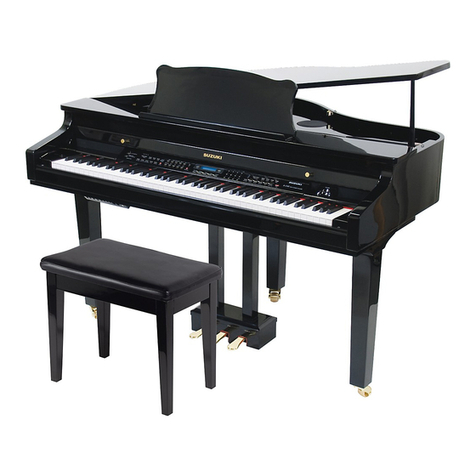
Suzuki
Suzuki S-350 User manual
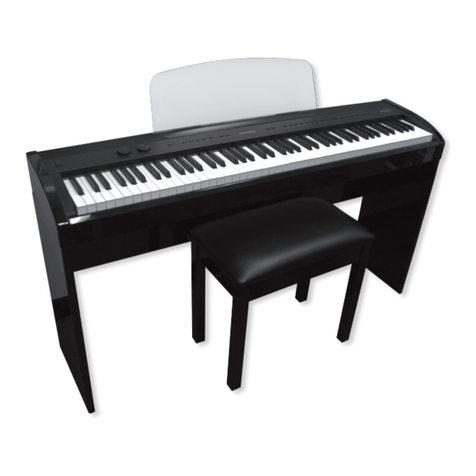
Suzuki
Suzuki SL-1 User manual
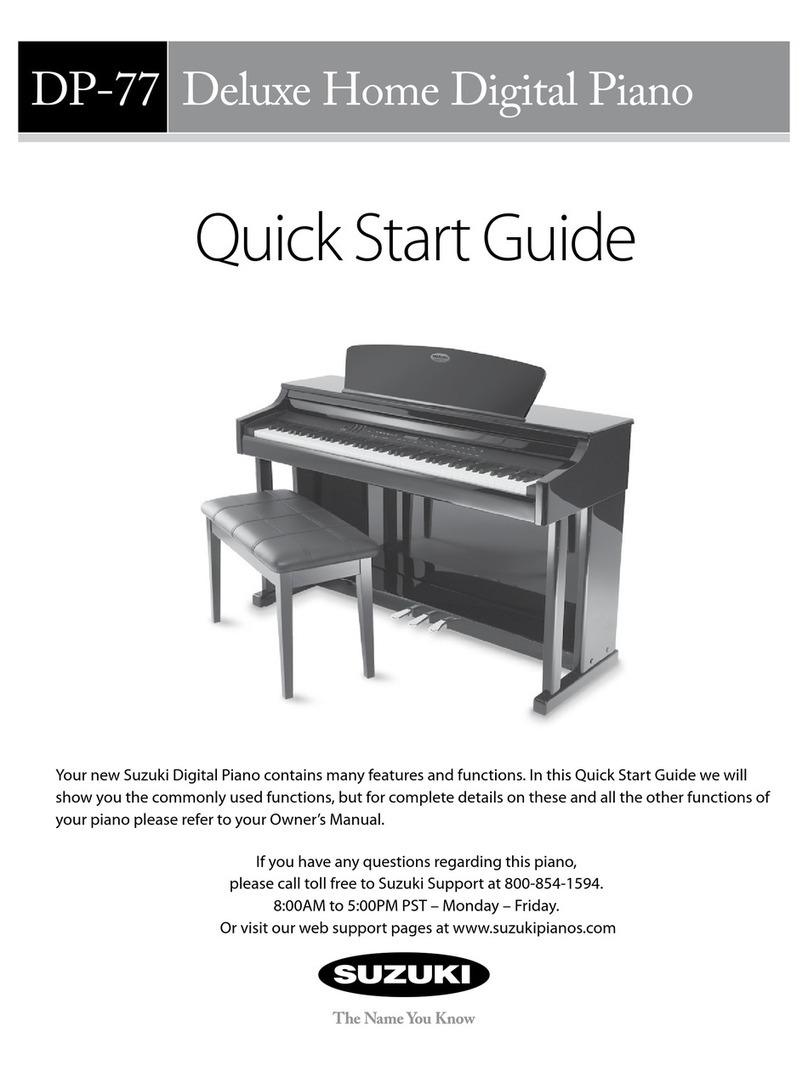
Suzuki
Suzuki Deluxe Home DP-77 User manual

Suzuki
Suzuki Digital Grand Piano User manual
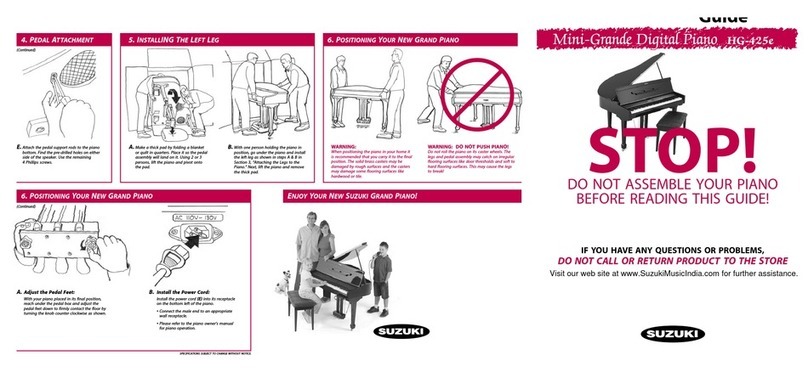
Suzuki
Suzuki HG-425e User manual

Suzuki
Suzuki G-33 User manual

Suzuki
Suzuki GP-7 User manual

Suzuki
Suzuki Violin Maintenance manual

Suzuki
Suzuki Micro Grand User manual
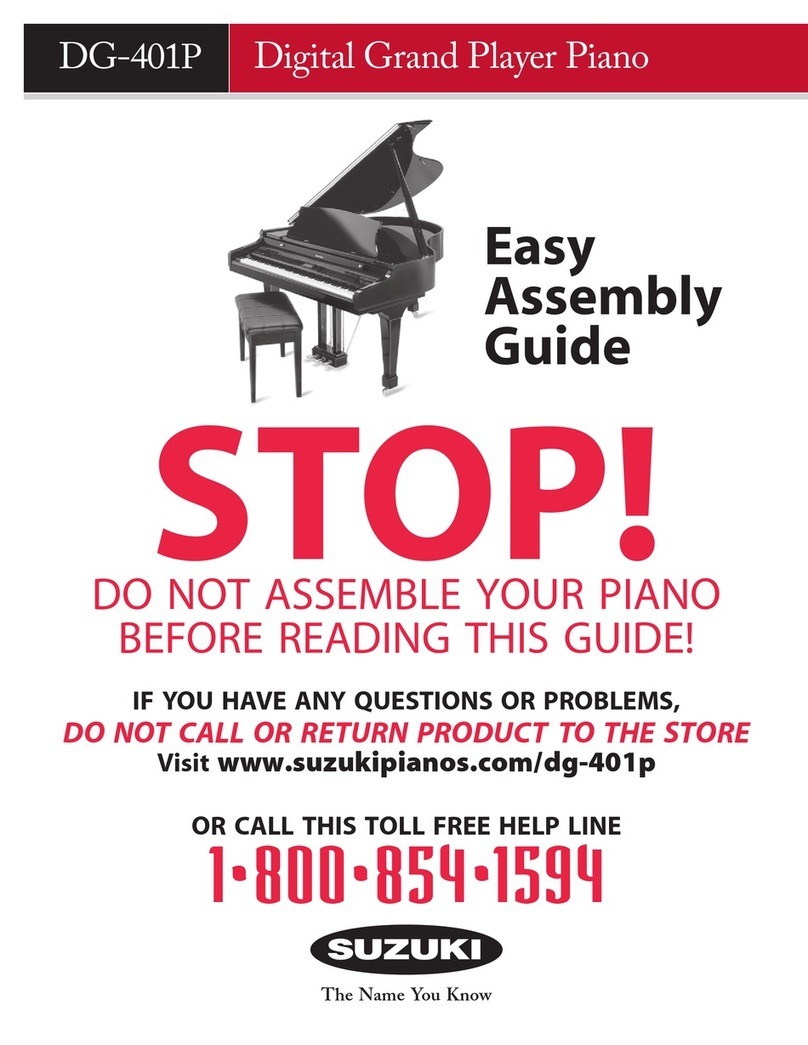
Suzuki
Suzuki DG-401P User manual
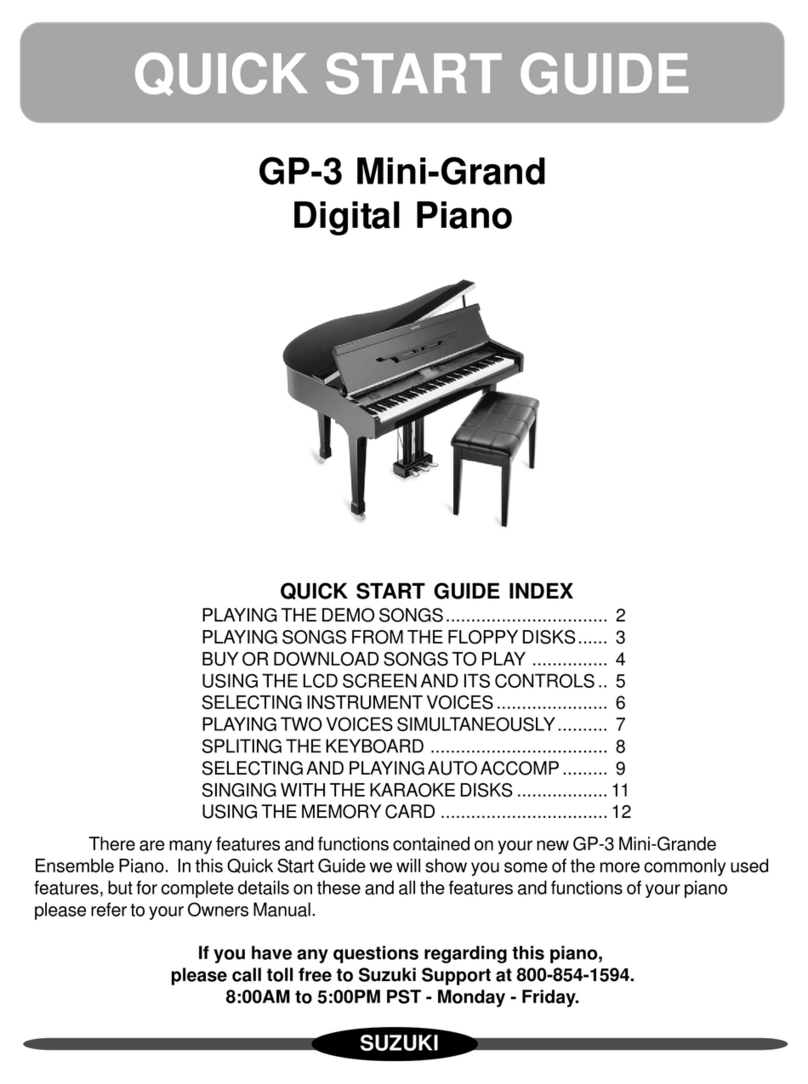
Suzuki
Suzuki GP-3 Mini-Grand User manual
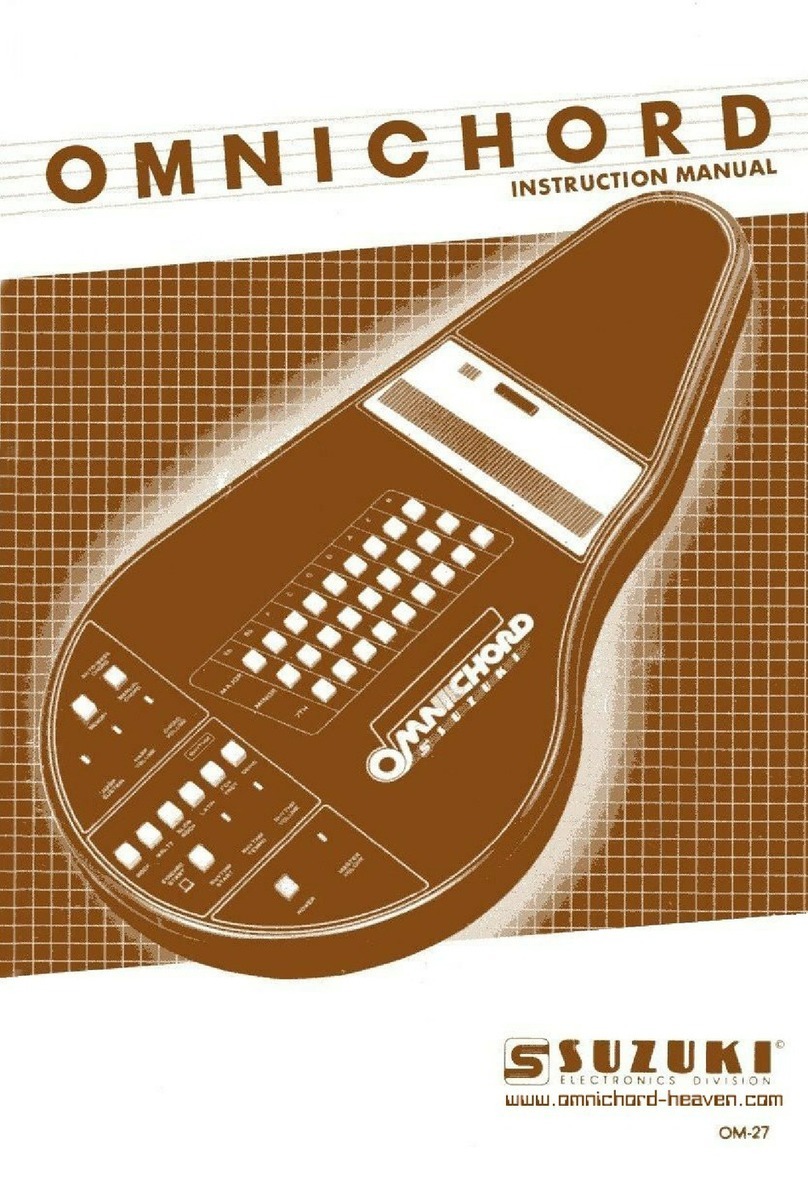
Suzuki
Suzuki Omnichord User manual
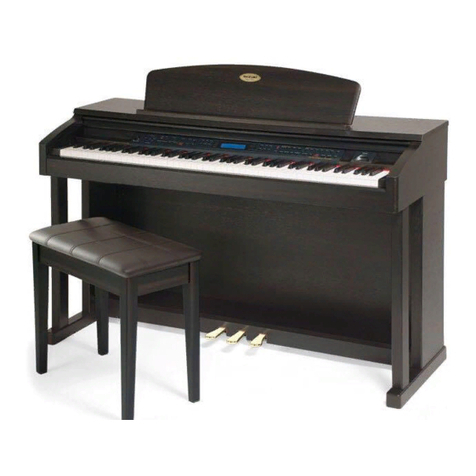
Suzuki
Suzuki HP-97 User manual
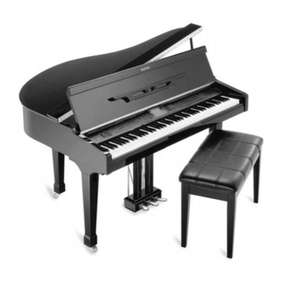
Suzuki
Suzuki GP-3 Mini-Grand User manual

Suzuki
Suzuki HG-425e User manual

Suzuki
Suzuki DG-401P User manual

Suzuki
Suzuki Trumpet Maintenance manual
